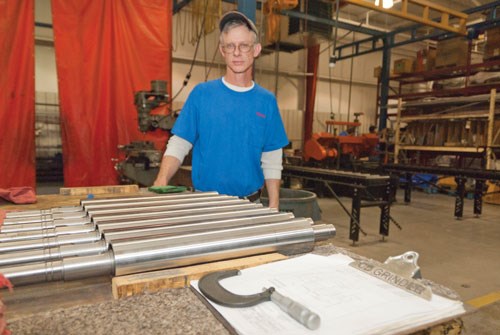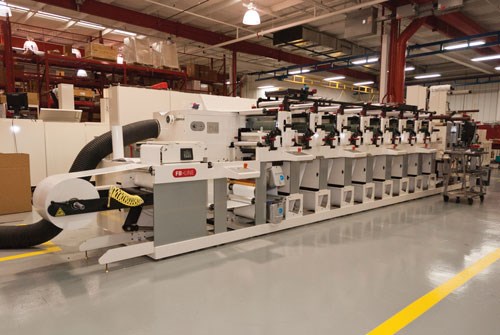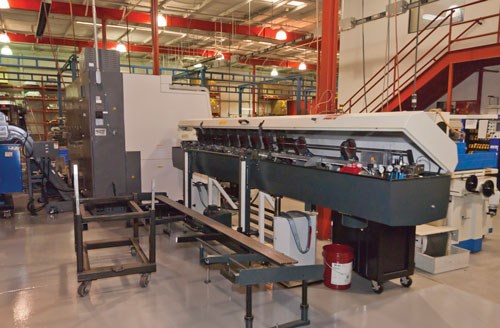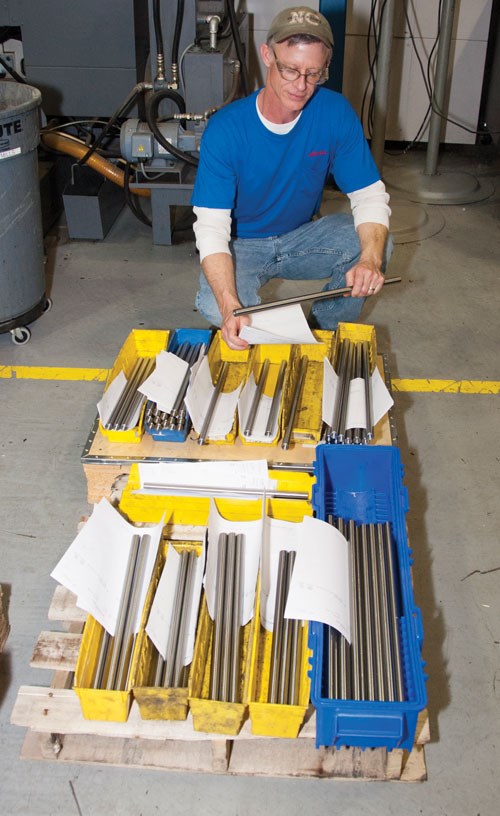Communication Among Workcell Components
An Ethernet-based system acts as a conduit for relaying operational data between the programming software, controller, bar feeder, machine tool and parts unloader.
When people and their companies unite behind a common goal amazing things can happen. This is true in any realm of human endeavor, not the least of which is manufacturing. Shops are often faced with complex machining challenges, time-intensive processes and relentless economic realities that require them to drive down part and product costs. But by bringing together the right tools, they can still achieve exceptional results.
Through experience and guided by the requirements of the application, shops generally are able to determine the best machine tool, workhandling, and cutting tool options that they have available to perform the task at hand. But getting all of the cogs of the system to seamlessly work together can sometimes be another challenge. When a software-based communications tool automates this process, the shop can realize huge productivity benefits.
Job Requirements
Machining Manager Steve Sander’s company, Nilpeter, manufactures and markets flexographic printing presses to companies that produce labels for a variety of applications. Nilpeter began making printing presses in 1919 in Copenhagen, Denmark. Today it is a worldwide manufacturer of narrow web presses for specialized applications. Through an acquisition in 2001, Nilpeter established its manufacturing and marketing presence in North America.
In the company’s 65,000-square-foot, Cincinnati, Ohio, facility, Nilpeter makes five models of flexographic presses that include a number of high-precision machined parts. One such family of parts is a series of impression cylinders that are critical components of each press. A typical Nilpeter flexographic press has eight impression rollers. Each roller must be precisely machined to final diameter tolerances of ± 0.00005 inch in order to evenly apply images to the label material. Each roller in this family of parts has slightly different diameter dimensions, ranging from 2.2621 inches through 2.2618 inches. Mr. Sander’s challenge was to reduce production time for these and other press components.
The manufacturing process for each roller included a series of seven steps:
1. The 1215 stainless steel barstock was cut to length.
2. The stock was then blanked.
3. The blank was faced on a manual lathe.
4. The part was sent out for gun drilling.
5. Upon return to Nilpeter, the part was turned on a CNC lathe.
6. Following turning, the part was sent out for pre-grinding and chroming.
7. The part returned to Nilpeter for finish grinding.
The internal manufacturing time for this process was 4.5 operator hours per impression roller. Additionally, production schedules had to allow for the parts to be sent out for gun drilling and returned for further operations. Obviously, some form of automation could help reduce the part production time, but Mr. Sander wanted a solution that could also help his overall machining requirements. So he went looking for expert advice.
Help on the Way
Among those he consulted was Dayton, Ohio, based Gosiger Inc. Gosiger sales and applications specialist, Dave Marsh, recommended a seven-axis, twin spindle CNC turning center for its speed, accuracy and versatility. According to Mr. Marsh, “Considering the various processes that the Nilpeter parts went through, this was an easy decision. The twin turrets let them precisely turn both ends of the part at the same time as well as mill and drill in the other axes.”
Clearly, the CNC machine tool would handle a number of machining functions and eliminate the need to send the impression rollers out for gun drilling. But taking full advantage of the machine’s capabilities to maximize productivity required the addition of a precision bar loading system. According to Mr. Sander, the obvious choice was the LNS Sprint S3 automatic magazine bar feeder because it has a hydrostatic, self-opening bearing block design for smooth, continuous bar loading and bar support. “These impression rollers are held to strict tolerances, so it’s important that the bar feeder supports the barstock to reduce vibration and let the machine spindle operate at optimum RPM. The Sprint S3 also eliminates the need to cut up 12-foot barstock, and it continuously feeds the lathe, so there’s no lost time between operations.”
Mr. Sander also notes LNS’ reputation for reliability and support as reasons to agree with Gosiger’s bar feeder recommendation. However, there was one more important factor that made the marriage of the turning machine and the LNS bar feeder attractive. LNS has the capability to interface its e-Connect Ethernet communications system with the lathe’s PLC so that the bar feeder and machine tool can exchange critical data with one another. This communication would make change-overs within the impression roller parts family quick and easy. As a bonus, LNS provided the Blaze Air vacuum unloading system to complement the proposed manufacturing cell. This system also links to the lathe’s control and the LNS e-Connect system.
Communication Skills
One of the unique features of this cell is the Part Library function of the LNS e-Connect system that enables Nilpeter to run other parts, including a family of idlers, on the same cell along with the impression rollers. Nilpeter currently runs 40 parts on this cell, using e-Connect to “talk” with the lathe’s production scheduling program and controller to maximize productivity and materials usage. LNS developed the Part Library to allow storage of the individual part configuration data the bar feeder needs to make a specific part. Through the e-Connect system, the bar feeder automatically detects the part program currently in use by the lathe and loads the correct setup data for that part from the Part Library. In this way the bar feeder change-over is accomplished on the fly, thus eliminating downtime.
Cell operator Bob Silcott quickly mastered the menu-driven control interface that enables him to begin his shift by loading the day’s production schedule. After entering the schedule, Mr. Silcott sees that the LNS Sprint S3 bar feeder magazine is loaded with the appropriate barstock. The cell typically runs 60 impression rollers each week from 2 3/4 inches, 1215 cold finished bars and 600 idler shafts from 3/4-inch stock.
Positive Returns
The seamless operation of the cell has resulted in significant time and cost savings for Nilpeter. According to Mr. Sander, machining of the impression roller that once consumed 4.5 man-hours now takes less than 30 minutes to complete. “None of this would have been possible without the cooperation of the three suppliers involved,” Mr. Sander reports. “Gosiger and LNS are both great to work with because they take the time to listen to what you want to accomplish and then make it happen. What really pulls it all together, of course, is the LNS e-Connect System working with the lathe’s PLC, the LNS Sprint bar loader, and the LNS Blaze Air unloader. This combination gives us the productivity we need and also saves on material costs. Plus, we’re not even close to utilizing the cell’s capacity, so we’re looking at other parts we can add to the production schedule.”
Mr. Sander adds, “We really pushed the envelope on the Ethernet system, asking it to do things that had never been done before. LNS and Gosiger worked together to create new software and tweak it until it does everything we asked for, and then some. We can set up the part production schedule and monitor the entire cell remotely, and even have the ability to receive alerts on our personal computers. It took some time to get it there, but we were patient because we knew we were asking a lot. I’m pleased that all of us stuck with it.”
Related Content
Shop Sets its Sights on Precise Tool Alignment
A Wisconsin shop has found that visual tool alignment technology has improved tool life and surface finishes for its Swiss-type lathes while increasing throughput as well.
Read MoreParting Off: The Case for Standardizing on Sawing
The value of rotary saw cutting for parting off operations could boil down to simple economics paired with process efficiency gains.
Read MoreStarting Small with Automation
Quick-change workholding and flexible robotic automation started this small shop on the path to success.
Read MoreThe Value of Swiss-Types Milling Rectangular Medical Parts
High-speed spindle technology was key to effective milling of small cardiac monitoring components complete on a CNC sliding-headstock machine platform instead of running them across two mills.
Read MoreRead Next
The Evolution of Feeding Barstock
When the ancient Egyptians employed the first known turning machines, productivity was probably not a top-of-mind issue. Given an abundance of slave labor, it’s likely the pharaohs enjoyed relatively low production costs. Today, of course, improving productivity is critical in any manufacturing operation that does not rely on plentiful, cheap labor.
Read MoreDo You Have Single Points of Failure?
Plans need to be in place before a catastrophic event occurs.
Read More5 Aspects of PMTS I Appreciate
The three-day edition of the 2025 Precision Machining Technology Show kicks off at the start of April. I’ll be there, and here are some reasons why.
Read More


















.jpg;maxWidth=300;quality=90)








